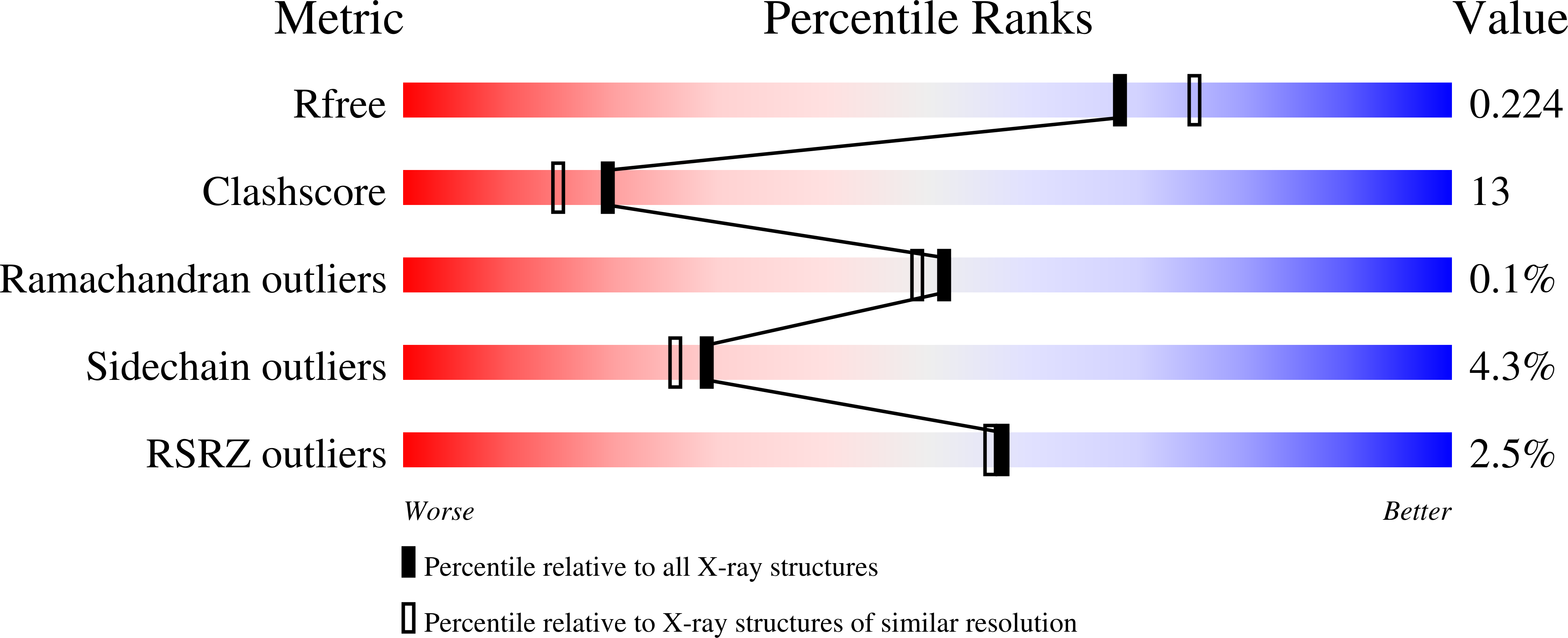The active site base controls cofactor reactivity in Escherichia coli amine oxidase: x-ray crystallographic studies with mutational variants.
Murray, J.M., Saysell, C.G., Wilmot, C.M., Tambyrajah, W.S., Jaeger, J., Knowles, P.F., Phillips, S.E., McPherson, M.J.(1999) Biochemistry 38: 8217-8227
- PubMed: 10387067
- DOI: https://doi.org/10.1021/bi9900469
- Primary Citation of Related Structures:
1DYU, 1QAF, 1QAK, 1QAL - PubMed Abstract:
Amine oxidases utilize a proton abstraction mechanism following binding of the amine substrate to the C5 position of the cofactor, the quinone form of trihydroxyphenylalanine (TPQ). Previous work [Wilmot, C. M., et al. (1997) Biochemistry 36, 1608-1620] has shown that Asp383 in Escherichia coliamine oxidase (ECAO) is the catalytic base which performs the key step of proton abstraction. This paper explores in more depth this and other roles of Asp383. The crystal structures of three mutational variants are presented together with their catalytic properties, visible spectra, and binding properties for a substrate-like inhibitor, 2-hydrazinopyridine (2-HP), in comparison to those of the wild type enzyme. In wild type ECAO, the TPQ is located in a wedge-shaped pocket which allows more freedom of movement at the substrate binding position (C5) than for TPQ ring carbons C1-C4. A role of Asp383, whose carboxylate is located close to O5, is to stabilize the TPQ in its major conformation in the pocket. Replacement of Asp383 with the isostructural, but chemically distinct, Asn383 does not affect the location or dynamics of the TPQ cofactor significantly, but eliminates catalytic activity and drastically reduces the affinity for 2-HP. Removal of the side chain carboxyl moiety, as in Ala383, additionally allows the TPQ the greater conformational flexibility to coordinate to the copper, which demonstrates that Asp383 helps maintain the active site structure by preventing TPQ from migrating to the copper. Glu383 has a greatly decreased catalytic activity, as well as a decreased affinity for 2-HP relative to that of wild type ECAO. The electron density reveals that the longer side chain of Glu prevents the pivotal motion of the TPQ by hindering its movement within the wedge-shaped active site pocket. The results show that Asp383 performs multiple roles in the catalytic mechanism of ECAO, not only in acting as the active site base at different stages of the catalytic cycle but also in regulating the mobility of the TPQ that is essential to catalysis.
Organizational Affiliation:
School of Biochemistry and Molecular Biology, University of Leeds, United Kingdom.

















